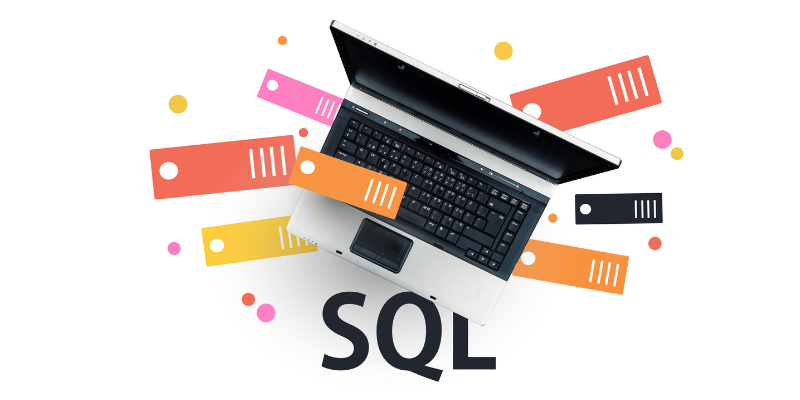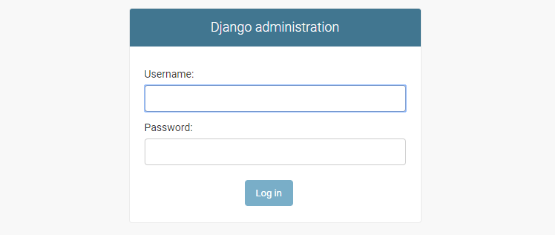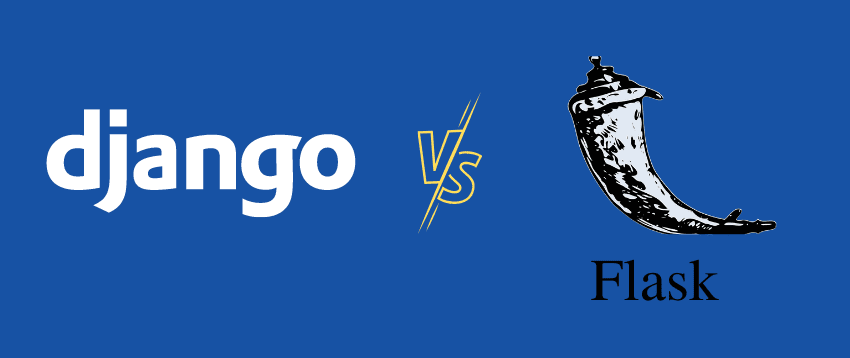If you are looking to develop your application using Flask or Django but are stuck on which one to go for, this article will help you decide by looking at the differences between Flask and Django.
Django and Flask are famous Python web frameworks for developing web-based applications. Being conversant with Python already shortens your learning curve in either of these frameworks.
To help you understand Django and Flask profoundly, we shall individually look at them in detail. This article will cover what Flask and Django are, their differences in terms of their unique features, and their pros and cons.
Let’s get right into it now.
Django as a framework

Django is a heavy-weight open-source framework convenient for the full-stack development of complex web applications. It was the creation of Adrian Holovaty and Simon Willison in 2003. It supports agile development that fosters rapid, quality, and efficient development.
Django is a high level because it provides full-stack development options like template layouts, request and error handling, cookies, unit tests, forms validation, table options, and other interfaces developers use to develop web applications.
Django defines four significant components it uses to implement its functionality mainly:
These components ease the development process and, as a result, requires less code to construct
the application.
Companies like Instagram, Udemy, Pinterest, Coursera, and Zapier use Django.
Django’s features
- Django offers support for various databases, including PostgreSQL, MySQL, Oracle, MariaDB, and its
default SQLite database. - You can implement it on different Operating Systems because it is cross-platform.
- You can use front-end tools like jQuery and Ajax with Django.
- Its Object-Relational Mapper(ORM) feature enables the generation of database migrations and management.
- Django is relatively fast in its implementation.
- Django’s adaptability to various formats like JSON, HTML, and XML gives it an upper hand over Flask.
- You can bet on Django’s security as it offers the required security measures, including
authentication and protocols against cross-site scripting that protect the application from security
from being compromised.
Flask as a framework

Flask, unlike Django, is a Python-based micro-framework that can implement its functionalities independent of external libraries. Flask is in-built with the tools, technologies, and libraries required to implement web application development. Armin Ronacher, in 2011, came up with it after trying to develop a combined solution by integrating Werkzeug, which is a server framework, and Jinja2, a template library.
Flask offers form validation extensions and other extensions for object-relational mappers, file uploads
among others.
Designers prefer Flask to Django as it is more flexible when modifying modules. Netflix, Lyft, Reddit, Zillow, and MailGi are among the top companies that use Flask.
Features of Flask
- Flask does not use external libraries for its development process, making it lightweight.
- Flask integrates a unit testing system that speeds up the debugging process and allows robust development.
- You can integrate Flask with machine learning and more technologies, making it a highly compatible framework.
- This framework’s debugger is in-built. So is its server.
- Its support for secure cookies protects the application’s HTTP requests to different servers, thus
protecting the application channels against potential unauthorized access.
Flask and Django differ in their features and how they implement development in Python-based web applications. Let us look into these differences in their characteristics.
Differences between Flask and Django
Framework type

While Django is a heavy-weight Python full-stack framework that implements its functionalities by using external libraries, Flask is lightweight with no external libraries to implement its functionalities. It, however, has the necessary tools and features in-built to serve its cause.
Databases
Implementing a relational database: PostgresSQL, MariaDB, or Oracle with Django is easier because of its available in-built Object-Relational Mapper ORM, a migration management tool. This tool supports the creation of forms, views, and templates based on the data models.

On the other hand, Flask is limited in its data storage support. Alternatively, it provides additional libraries and extensions similar to Django’s ORM. For example, Flask uses the SQLAlchemy library instead of ORM and Flask-SQLAlchemy as its extension.
Alembic is a migration tool that SQLAlchemy uses. SQLAlchemy is suitable for the non-relational database.
Framework implementation with Data Models
Django uses the object-oriented approach that allows the link of the database with their tables to classes. This approach is called object-relational mapping.
On the other hand, Flask only uses external libraries and extensions to implement a modular approach.
Auth
Django implements authentication, authorization, and account management and uses the User model to support sessions.
By default, Flask supports cookie-based sessions and requires Flask-Login extension and Flask-Security for Authorization and Authentication.
Flask-Security extension implements account management, while the Flask-principal extension implements authorization.
Admin

Django admin’s panel enables users to manage data from existing models by providing an interface. It easily performs CRUD operations without the need for code.
Flask only has its Flask-Admin extension that implements similar functionalities to Django’s admin panel.
Flexibility
Flask, a framework based on external libraries and extensions to implement its functionalities, increases flexibility. It is an added advantage to developers who wish to control how to use the framework to develop the application.

On the contrary, Django’s in-built features and tools restrict the developer’s flexibility to change the application’s modules.
Debugging tools
Flask comes with an in-built debugger that serves as a virtual debugger.
At the same time, Django does not provide any virtual debugger.
Testing
Both frameworks contain in-built testing support. Python’s default unit test framework is effectively used in both frameworks.
Template Engine
Django uses its template engine to add data to an existing HTML page to your application. Django also uses Jinja2.
Flask exclusively uses Jinja2 as its template engine. Both of these engines contain some similarities in syntax and features.
Security

Django’s large codebase exposes the application to potential security threats that could compromise the application’s data and general security. Fortunately, Django comes with default security measures against threats like cross-site request forgery(CSRF), cross-site scripting(XSS), and SQL injections.
With a relatively smaller codebase for Flask, security threats may be minimal but that does not mean you should be ignorant about taking security measures. The main security measure Flask developers should take is to monitor their external libraries and regularly update them.
Forms
Django’s installation by default provides forms; that data models create using ModelForms, which handles data input and validation of clients and servers. Forms also deal with security issues, including cross-site
request forgery(CSRF), SQL injection, and cross-site scripting(XSS).

Flask integrates Flask-WTF extension with WTForms instead. WTForms-Alchemy subsequently uses SQLAlchemy models to create forms.
Routing and Views
Flask and Django support mapping URLs to function-based or class-based views via a request.
Django routes a URL pattern to a view by referencing a request object containing the request information to invoke the required view.
Contrarily for Flask, the Werkzeug extension implements the URL routing and also handles requests and responses from the application.
The scope of the application
If you are working on a full-stack web application with server-side templating, you will do well to use Django. Flask is a better alternative for static website development because it offers simple functions and allows you to extend necessary extensions and or libraries whenever necessary.
The RESTful concept
Both implement a REST web service, RESTful web service for Flask, and Django REST Framework that injects data into your application.
Django REST Framework creates an API that fetches data from the existing data models using the RESTful interface for the application to consume.
DRF uses views, serializers, validation, and auth required for the API’s rapid development.
Bootstrapping tool
Django’s admin interface is developed on bootstrap. Additionally, this inbuilt bootstrap tool allows you to create and style pages of your application without adding external code. Flask lacks this in-built bootstrapping tool.
Performance
Flask is your better option if performance efficiency is your end goal because it is coupled with fewer layers and extends libraries if and only when necessary.

In addition to using features as a distinguishing factor between these two frameworks, considering their advantages and disadvantages will further help you to learn about their differences.
Advantages and Disadvantages
Advantages of Django 👍
- Django’s documentation is profound and, therefore, a helpful guide to beginners.
- Its admin panel provides an efficient user interface for admins to perform their tasks.
- Django has an in-built unit testing for its application.
- The setup and starting process is easy aIf. In case you get stuck along the way, you can always refer to the documentation.
- It ensures in-built security measures for the applications against threats like cross-site scripting.
- It also supports dynamic HTML pages.
- Django is highly scalable. Therefore, updating different layers is easy because they are independent of each other.
- Django’s community is large and supportive if you need help solving a bug in your project or setting up Django.
Disadvantages of using Django 👎
- You are required to be aware of its basic concepts before you can use it.
- Its vast codebase and use of regular expression (regex) to dispatch URLs to map views further complicate the codebase.
- This framework is more suitable for high-end(full-stack) projects as its numerous functions complicate a simple project.
- Django’s monolithic architecture also restricts the developer’s control over the application.
Advantages of Flask 👍
- You can efficiently use Flask with small projects and single-page applications SPA because of the simple functions it requires to implement.
- It allows the developer to use relevant external extensions and libraries in their, increasingcreasing the framework’s flexibility.
- Because the codebase it requires for its functions is small, you cadevelope up with a Flask prototype in no time.
- Its Werkzeug extension efficiently implements routing of the URLs to the respective views.
Disadvantages of Flask 👎
- Flask does not come with an admin interface, thus jeopardizing its ability to maintain models and perform basic CRUD operations on the application.
- Flask implements the Minimum Viable Product development, which ends up slowing down the entire development process.
- This framework is not a suitable choice for large projects.
- Flask does not support relational-database management systems like MySQL or Oracle. It only limits its support to SQLAlchemy for its database requirements.
Wrap up
Well, there you have it now😊.
Flask and Django are popular Python-based frameworks with different features and different functionalities.
The differences this article covers help you to understand the intricacies of Flask and Django individually. Some notable differences between these two frameworks include their application scope and functionalities.
While Django is a better alternative for developing large applications, Flask is suitable for small applications required to perform simple functionalities.
Flask’s flexibility in extending it with external libraries gives the developer complete control in manipulating the applications. On the other hand, Django comes with its in-built external extensions and libraries that limit the developer’s level of manipulation during development.
Moreover, Django requires you to extensively learn its basics since it can get complicated too fast, especially for beginners. Flask has a shorter learning curve.
Importantly, equipping yourself with skills in both frameworks makes you an even better developer and increases your hiring chances in the tech field.
Additionally, whether you want to opt for Django or Flask to develop your application, you may want to consider these questions:
- How much time do you have set aside for learning and development?
- How large is your application?
- The level of flexibility you intend to have with the application development.
- Their general pros and cons.
The above questions will help you decide wisely🤓.
After going through the learning curve, you can either use Django to create amazing applications like the Django URL dispator also learn great Flask concepts like securing a Flask’s API.
Happy learning!👩💻
Si quiere puede hacernos una donación por el trabajo que hacemos, lo apreciaremos mucho.
Direcciones de Billetera:
- BTC: 14xsuQRtT3Abek4zgDWZxJXs9VRdwxyPUS
- USDT: TQmV9FyrcpeaZMro3M1yeEHnNjv7xKZDNe
- BNB: 0x2fdb9034507b6d505d351a6f59d877040d0edb0f
- DOGE: D5SZesmFQGYVkE5trYYLF8hNPBgXgYcmrx
También puede seguirnos en nuestras Redes sociales para mantenerse al tanto de los últimos post de la web:
- Telegram
Disclaimer: En Cryptoshitcompra.com no nos hacemos responsables de ninguna inversión de ningún visitante, nosotros simplemente damos información sobre Tokens, juegos NFT y criptomonedas, no recomendamos inversiones


